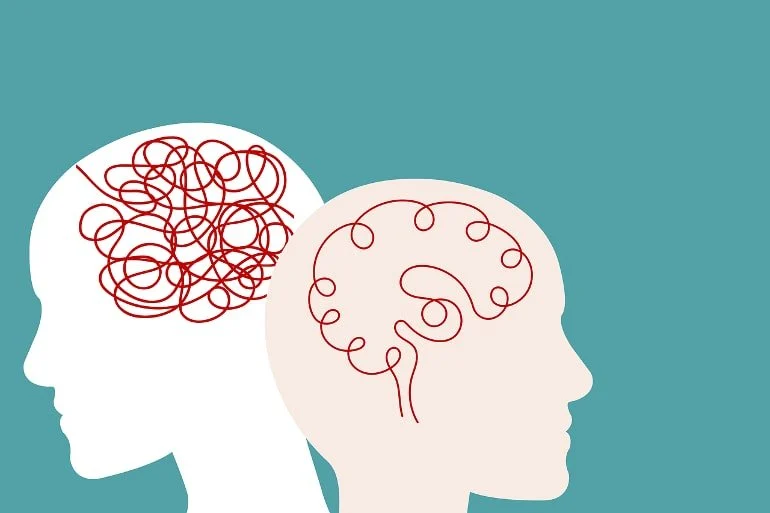Bipolar disorder, formerly known as manic depression, is a mental health condition characterized by periods of depression and periods of mania or hypomania. For those who live with this disorder, the extreme mood swings can feel like an uncontrollable roller coaster, affecting daily life, relationships, and even one’s sense of self. However, with the right therapeutic interventions and ongoing support, many individuals with bipolar disorder can lead full, productive lives. This blog post delves into various bipolar disorder therapy approaches and other holistic approaches to help you.
Contents
When To Seek Bipolar Disorder Therapy?
 Bipolar disorder is a complex mental health condition that affects everyone differently. Recognizing its signs early and seeking appropriate therapy can significantly improve an individual’s quality of life and reduce the severity of episodes. Here’s a guide to help you understand when it might be time to seek therapy for bipolar disorder:
Bipolar disorder is a complex mental health condition that affects everyone differently. Recognizing its signs early and seeking appropriate therapy can significantly improve an individual’s quality of life and reduce the severity of episodes. Here’s a guide to help you understand when it might be time to seek therapy for bipolar disorder:
1. Extreme Mood Swings
If you or someone you know is experiencing extreme mood swings that shift from feelings of extreme happiness or euphoria (mania) to deep sadness or hopelessness (depression). Then, it might indicate bipolar disorder.
2. Disruption in Daily Life
When these mood changes begin to interfere with work, school, relationships, or daily tasks, it’s a sign that intervention might be needed.
3. Sleep Disturbances
Either sleeping too much or experiencing insomnia, especially when combined with other symptoms, can be a red flag.
4. Risky or Impulsive Behavior
Engaging in unusually risky or impulsive behaviors, especially during manic phases, such as excessive spending, unsafe sexual activity, or substance abuse, warrants attention.
5. Rapid Speech and Racing Thoughts
If someone is speaking rapidly, jumping from one idea to another, or complains of racing thoughts, these could be indicative of a manic episode.
6. Feeling Overly Energetic or Wired
Feeling unusually energetic or “wired,” especially when combined with a decreased need for sleep. These can be a symptom of a manic episode.
7. Thoughts of Harm
Any thoughts of self-harm, suicide, or harming others should be treated as emergencies. If someone expresses these feelings, seek help immediately.
If you or someone you know exhibits any of these signs, it’s crucial to consult a mental health professional. Early intervention and consistent therapy can lead to better outcomes.
What Are Some Types Of Bipolar Disorder Therapy?
Over the years, a variety of therapeutic approaches have been developed to treat and manage this disorder. Here’s a look at some of the primary types of therapy used for bipolar disorder:
Cognitive Behavioral Therapy (CBT)
This is a well-established therapeutic approach grounded in the interaction between thoughts, feelings, and behaviors. For individuals with bipolar disorder, CBT becomes an invaluable tool. It allows them to delve deep into their patterns of negative thinking and behaviors that may exacerbate or trigger episodes. By learning to identify these patterns, individuals are better equipped to preemptively address triggers or manage the onset of a mood episode.
Interpersonal and Social Rhythm Therapy (IPSRT)
IPSRT is uniquely tailored to address the challenges of bipolar disorder. At its core, this therapy acknowledges the critical role of stable daily routines and robust interpersonal relationships in managing the disorder. Disruptions in routines, like sleep patterns, can potentially trigger mood episodes. By emphasizing the maintenance of a regular social rhythm, IPSRT aids in preventing these shifts.
Psychoeducation
 Knowledge is power, and this is particularly true when managing a complex condition like bipolar disorder. Psychoeducation is an approach that emphasizes educating both the individual and their family about the disorder. By understanding its intricacies, symptoms, and triggers, patients and their families are better equipped to recognize early warning signs. This timely recognition can lead to faster interventions, reducing the severity or length of an episode.
Knowledge is power, and this is particularly true when managing a complex condition like bipolar disorder. Psychoeducation is an approach that emphasizes educating both the individual and their family about the disorder. By understanding its intricacies, symptoms, and triggers, patients and their families are better equipped to recognize early warning signs. This timely recognition can lead to faster interventions, reducing the severity or length of an episode.
Family-focused Therapy
Bipolar disorder doesn’t only affect the individual diagnosed. Rather, it has ripple effects on the entire family unit. Family-focused therapy addresses this collective impact by involving family members in the therapeutic process. Through this approach, families are educated about the disorder. This can dismantle misconceptions. Improved communication techniques are introduced, ensuring that the individual feels supported and understood.
Dialectical Behavior Therapy (DBT)
Originally developed for borderline personality disorder, DBT has found relevance in treating bipolar disorder as well. Central to DBT is the balance between acceptance and change. For individuals with bipolar disorder, this means accepting their current state while simultaneously working towards a more stable mood state. DBT also provides tools and skills, like emotion regulation and distress tolerance. This can be particularly beneficial during intense emotional episodes.
Electroconvulsive Therapy (ECT)
ECT is a more invasive approach reserved for severe cases of bipolar disorder where other treatments have not been effective. This procedure involves passing controlled electric currents through the brain to trigger a brief seizure. Although the idea can be intimidating, modern ECT is conducted under anesthesia and is considered safe. For many, it provides rapid relief from severe depressive or manic episodes, making it a valuable option in the therapeutic arsenal.
In managing bipolar disorder, a multi-faceted approach often yields the best results. The combination of therapies is tailored to the individual’s needs. This will help to ensure that treatment remains dynamic, responsive, and effective.
What Are Some Holistic and Alternative Therapies To Help?
 While traditional therapeutic approaches and medications remain the cornerstone for treating bipolar disorder, many individuals and clinicians are exploring holistic and alternative therapies. These approaches aim to treat the whole person – mind, body, and spirit – rather than just the symptoms of the disorder. Here’s a look at some holistic and alternative bipolar disorder therapy:
While traditional therapeutic approaches and medications remain the cornerstone for treating bipolar disorder, many individuals and clinicians are exploring holistic and alternative therapies. These approaches aim to treat the whole person – mind, body, and spirit – rather than just the symptoms of the disorder. Here’s a look at some holistic and alternative bipolar disorder therapy:
Diet and Nutrition
Dietary habits can significantly influence our mental health. For those with bipolar disorder, certain nutrients might play a pivotal role in mood stabilization. For instance, Omega-3 fatty acids, abundantly found in fish oils and flaxseed, have shown promise in managing mood disorders. Additionally, moderating the intake of stimulants like caffeine and high sugar content can potentially help in reducing the severity of mood swings.
Exercise
Physical activity’s role in mental health is well-documented. Whether it’s aerobic exercises, strength training, yoga, or just regular walks, physical movement can act as a natural mood enhancer. For those with bipolar disorder, consistent exercise routines can offer dual benefits: alleviating symptoms of depression and ensuring better sleep quality, both of which are crucial for mood stabilization.
Herbal Supplements
While nature offers a plethora of herbs believed to have therapeutic properties, it’s crucial to tread with caution. Herbs like St. John’s Wort or valerian root have been studied for potential mood-stabilizing effects. However, these can interact with prescribed bipolar medications. Thus, any consideration of herbal supplements should always be under a doctor’s guidance.
Acupuncture
Originating from ancient Chinese medicinal practices, acupuncture aims to balance the body’s energy flow by inserting needles at specific points. While research on its efficacy for bipolar disorder is still in the nascent stages, some studies have suggested potential benefits, especially for depressive phases. However, it’s essential to ensure that any such treatment is undertaken by licensed professionals.
Aromatherapy
The therapeutic potential of essential oils is the foundation of aromatherapy. Oils like lavender, chamomile, and bergamot have calming properties that some individuals with bipolar disorder find beneficial, especially for managing anxiety and improving sleep patterns. While generally safe, it’s always best to ensure that one isn’t allergic to specific oils.
Biofeedback and Neurofeedback
Biofeedback and neurofeedback are innovative therapies that train individuals to control certain physiological functions, aiming for improved mental well-being. Preliminary research hints at their potential for mood stabilization by allowing individuals to alter and control specific brainwave patterns. However, these therapies require specialized professionals and equipment.
While these can be beneficial, they should ideally complement, not replace, traditional treatments. Always consult healthcare professionals before integrating any alternative therapy to ensure safety and compatibility.
How To Choose The Right Bipolar Disorder Therapy?
 Choosing the right bipolar disorder therapy can be a pivotal decision in one’s journey toward stability and improved well-being. Here are some tips to help navigate the process of choosing the right therapy:
Choosing the right bipolar disorder therapy can be a pivotal decision in one’s journey toward stability and improved well-being. Here are some tips to help navigate the process of choosing the right therapy:
1. Understand the Diagnosis
Before delving into therapeutic options, ensure a clear and accurate diagnosis from a licensed psychiatrist or clinical psychologist. The nuances between Bipolar I, Bipolar II, and Cyclothymic Disorder, for instance, can influence the most effective treatment path.
2. Professional Consultation
Engage in thorough discussions with mental health professionals. They can provide insights into the various therapeutic approaches, their benefits, potential side effects, and how they might align with your unique needs.
3. Consider Medication
For many with bipolar disorder, medication is a core component of treatment. Discuss potential medications, their side effects, and benefits with a psychiatrist. Regularly monitor and adjust dosages to ensure optimal efficacy.
4. Gauge Personal Comfort
Therapeutic success often hinges on one’s comfort and rapport with the therapist. It might be worthwhile to have initial sessions with multiple therapists to find someone with whom you resonate.
5. Support Systems
Group therapy or support groups can be beneficial by providing shared experiences and mutual support. For some, this communal support can be as therapeutic as individual sessions.
6. Set Realistic Expectations
Therapy is a process, often with highs and lows. Set realistic expectations and be patient. Celebrate small victories along the way.
7. Consider Financial and Logistical Factors
Ensure that the chosen therapy is logistically feasible (in terms of location, and session frequency) and financially sustainable. Check for insurance coverage or sliding scale fees if costs are a concern.
Hence, it’s essential to stay proactive, informed, and engaged in the decision-making process. Remember, the journey to stability and well-being is a marathon, not a sprint. Each step contributes to overall growth and recovery.
Conclusion
Navigating the complexities of bipolar disorder requires a comprehensive, individualized approach to therapy. While traditional treatments lay the foundation, exploring holistic and alternative methods can offer complementary benefits. The journey to mental stability is deeply personal, influenced by individual nuances and ever-evolving needs.
By staying informed, actively engaging with healthcare professionals, and seeking support, individuals can chart a path toward improved well-being and a fulfilling life. If you are looking for affordable Bipolar Disorder Counseling in India TherapyMantra can help: Book a trial Online therapy session


